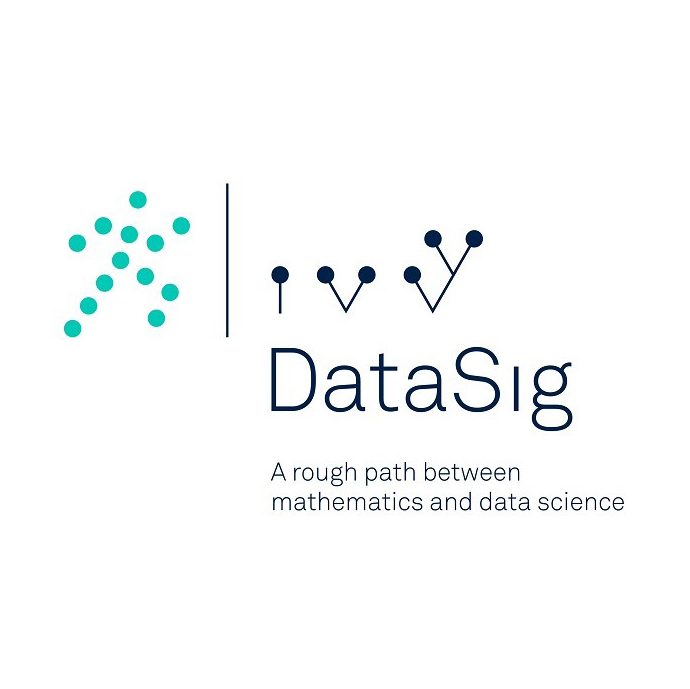RoughPy is a package for working with streaming data as rough paths, and working with algebraic objects such as free tensors, shuffle tensors, and elements of the free Lie algebra.
This library is currently in an alpha stage, and as such many features are still incomplete or not fully implemented. Please bear this in mind when looking at the source code.
Please refer to the documentation and to the examples folder for details on how to use RoughPy. If you want to implement more complex functions built on top of RoughPy, you may also want to check out the roughpy/tensor_functions.py file to see how the "LOG" function is implemented for free tensor objects.
RoughPy can be installed from PyPI using pip on Windows, Linux, and MacOS (Intel based Mac only, sorry not Apple Silicon support yet). Simply run
pip install roughpy
to get the latest version.
Alternatively, the wheel files can be downloaded from the Releases page.
RoughPy can be installed from source, although this is not the recommended way to install. The build system requires vcpkg in order to obtain the necessary dependencies (except for MKL on x86 platforms, which is installed via pip). You will need to make sure that vcpkg is available on your system before attempting to build RoughPy. The following commands should be sufficient to set up the environment for building RoughPy:
git clone https://github.com/Microsoft/vcpkg.git tools/vcpkg
tools/vcpkg/bootstrap-vcpkg.sh
export CMAKE_TOOLCHAIN_FILE=$(pwd)/tools/vcpkg/scripts/buildsystems/vcpkg.cmakeWith this environment variable set, most of the dependencies will be installed automatically during the build process.
You should now be able to pip install either using the PyPI source distribution (using the --no-binary :roughpy:
flag), or directly from GitHub (recommended):
pip install git+https://github.com/datasig-ac-uk/RoughPy.gitIt will take some time to build.
RoughPy is very careful in how it works with intervals. One design goal is that it should be able to handle jumps in the underlying signal that occur at particular times, including the beginning or end of the interval, and still guarantee that if you combine the signature over adjacent interval, you always get the signature over the entire interval. This implies that there has to be a decision about whether data at the exact beginning or exact end of the interval is included. The convention in RoughPy are that we use clopen intervals, and that data at beginning of the interval is seen, and data at the end of the interval is seen in the next interval. A second design goal is that the code should be efficient, and so the internal representation of a stream involves caching the signature over dyadic intervals of different resolutions. Recovering the signature over any interval using the cache has logarithmic complexity (using at most 2n tensor multiplications, when n is the internal resolution of the stream). Resolution refers to the length of the finest granularity at which we will store information about the underlying data. Any event occurs within one of these finest granularity intervals, multiple events occur within the same interval resolve to a more complex log-signature which correctly reflects the time sequence of the events within this grain of time. However, no query of the stream is allowed to see finer resolution than the internal resolution of the stream, it is only allowed to access the information over intervals that are a union of these finest resolution granular intervals. For this reason, a query over any interval is replaced by a query is replaced by a query over an interval whose endpoints have been shifted to be consistent with the granular resolution, obtained by rounding these points to the contained end-point of the unique clopen granular interval containing this point. In particular, if both the left-hand and right-hand ends of the interval are contained in the clopen granular interval, we round the interval to the empty interval. Specifying a resolution of 32 or 64 equates to using integer arithmetic.
If you have a specific problem, the best way to record this is to open an issue on GitHub. We welcome any feedback or bug reports.
In the future, we will welcome pull requests to implement new features, fix bugs, add documentation or examples, or add tests to the project. However, at present, we do not have robust CI pipelines set up to rigorously test incoming changes, and therefor will not be accepting pull requests made from outside the current team.
The full list of contributors is listed in THANKS alongside this readme. The people mentioned in this document constitute The RoughPy Developers.
RoughPy is licensed under a BSD-3-Clause license. This was chosen specifically to match the license of NumPy.
